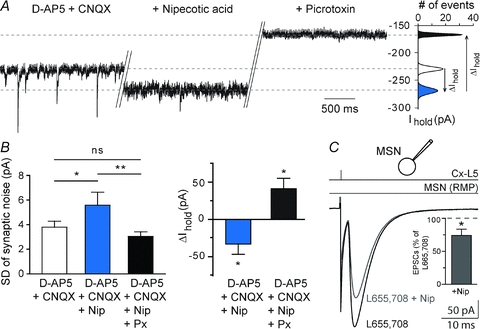Figure 6. Increased tonic GABA inhibition is not responsible for the effect of nipecotic acid on corticostriatal transmission.

A, the phasic and tonic GABAergic components were estimated, respectively, after inhibition of the ionotropic glutamatergic (d-AP5, 50 μm, CNQX, 10 μm) and GABAergic (picrotoxin, 50 μm) conductances. Nipecotic acid increased the tonic component as illustrated by a larger current injected to maintain the Em and by a reduction of the synaptic noise. B, bar graphs show the significant increase of the average values of the injected current necessary to maintain the MSN at −80 mV, when nipecotic acid (500 μm) was applied. Application of nipecotic acid induced a significant increase of the SD of the synaptic noise (denoting an increase of the tonic inhibition), which was significantly reduced by picrotoxin (denoting the abolition of the tonic inhibition). C, when tonic inhibition was blocked by L655,708 (10 μm), the corticostriatal transmission could still be significantly reduced by nipecotic acid (n = 6). This indicates that phasic and not tonic inhibition was involved in the decrease of the corticostriatal transmission induced by nipecotic acid. Note that inhibition of α5-GABAA receptors with L655,708 did not induce significant effect on corticostriatal transmission (n = 11). ns: not significant, *P < 0.05, **P < 0.01.
